Consider two parallel conducting frictionless tracks kept in a gravity-free space as shown in Fig. 3.200. A movable conducting PQ, initially kept at OA, is given a velocity 10ms−1 toward right. The space contains a magnetic field which depends upon the distance moved by conductor PQ from the OA line and given by
![Consider two parallel conducting frictionless tracks kept in a gravity-free space as shown in Fig. 3.200. A movable conducting PQ, initially kept at OA, is given a velocity 10 ms^(-1) toward right. The space contains a magnetic field which depends upon the distance moved by conductor PQ from the OA line and given by vec(B) = cx(-hat(k)) [c = constant = 1 SI unit] The mass of the conductor PQ is 1 kg and length of PQ is 1m. Answer the following question based on the passage. The distance travelled by the conductor when its speed is 5 ms^(-1) is](https://d10lpgp6xz60nq.cloudfront.net/physics_images/BMS_V05_C03_E01_199_Q01.png)
→B=cx(−ˆk)[c=constant=1SIunit]
The mass of the conductor PQ is 1kg and length of PQ is 1m. Answer the following question based on the passage.
The distance travelled by the conductor when its speed is 5ms−1 is
(a) (152)1/3
(b) (103)1/3
( c) (10)1/3
(d)none of the above
The correct Answer is:A
(a) Let anticlockwise direction is positive
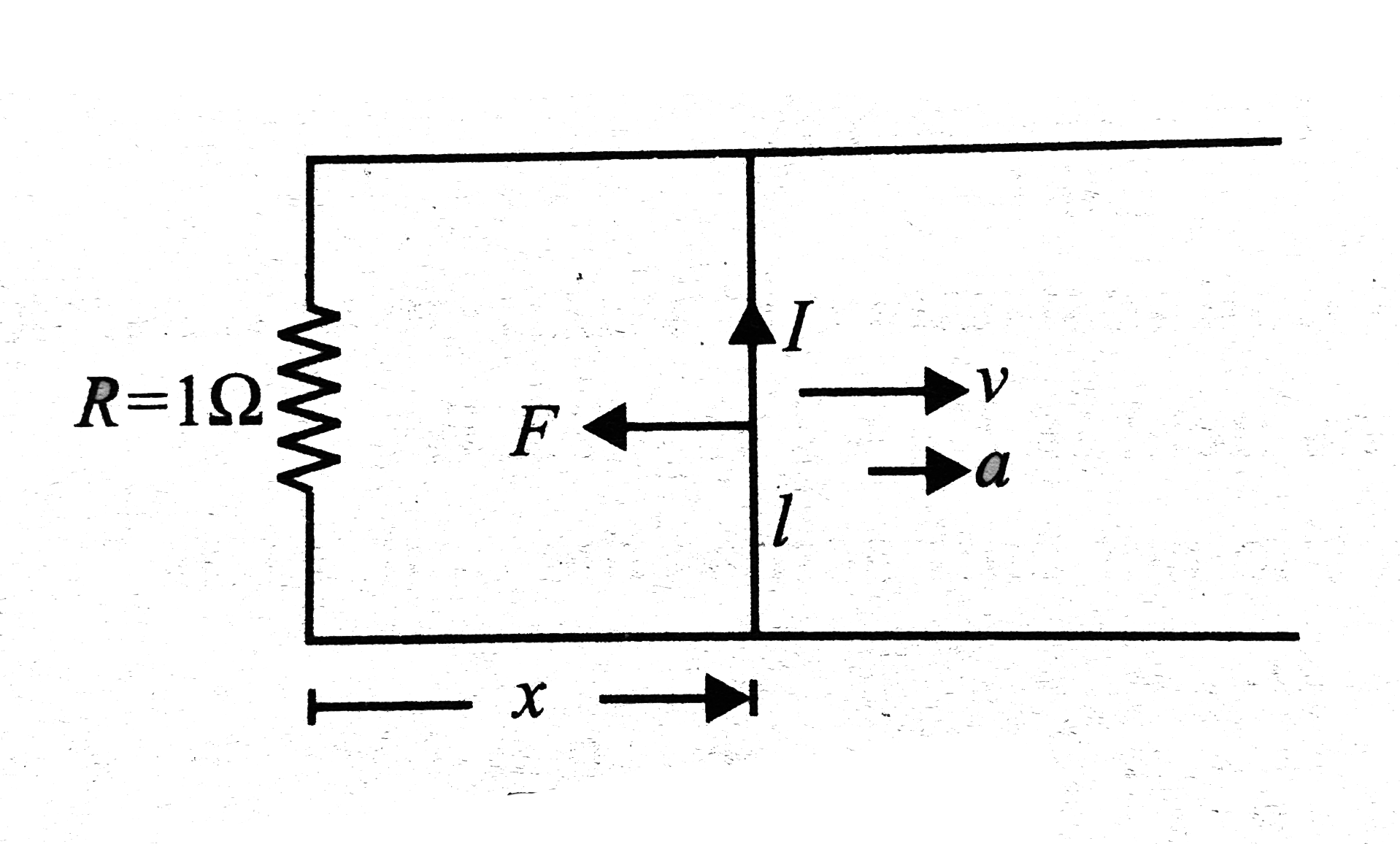
ϕ=BAcos180∘=cxlxcos180∘=−clx2
e=−dϕdt=cl2xdxdt,I=eR=2clxv1=2clxv
This is positive so current is anticlockwise.
F=m(−a) → IBl=−mvdvdx → sc2l2x2v=−mvdvdx
→ 2c2l2∫x0x2dx=−∫510mdvrarr2c2l2x33=m(5)
→ x3=15m2c2l2rarrx(152)13
Heat produced = loss in KE of rod=12×1[102−52]=752=37.5J
Magnetic force is not doing any work.
Topper's Solved these Questions
- ELECTROMAGNETIC INDUCTIONBOOK - CENGAGE PHYSICS ENGLISHCHAPTER - ELECTROMAGNETIC INDUCTIONEXERCISE - Exercises Integer
9 Videos
- ELECTROMAGNETIC INDUCTIONBOOK - CENGAGE PHYSICS ENGLISHCHAPTER - ELECTROMAGNETIC INDUCTIONEXERCISE - Archives Fill In The Blanks
3 Videos
- ELECTROMAGNETIC INDUCTIONBOOK - CENGAGE PHYSICS ENGLISHCHAPTER - ELECTROMAGNETIC INDUCTIONEXERCISE - Exercises Asserton - Reasoning
8 Videos
- ELECTRICAL MEASURING INSTRUMENTSBOOK - CENGAGE PHYSICS ENGLISHCHAPTER - ELECTRICAL MEASURING INSTRUMENTSEXERCISE - M.C.Q
2 Videos
- ELECTRON,PHONTS,PHOTOELECTRIC EFFECT & X-RAYSBOOK - CENGAGE PHYSICS ENGLISHCHAPTER - ELECTRON,PHONTS,PHOTOELECTRIC EFFECT & X-RAYSEXERCISE - dpp 3.3
15 Videos
Similar Questions
Consider two parallel conducting frictionless tracks kept in a gravity-free space as shown in Fig. 3.200. A movable conducting PQ, initially kept at OA, is given a velocity 10ms−1 toward right. The space contains a magnetic field which depends upon the distance moved by conductor PQ from the OA line and given by
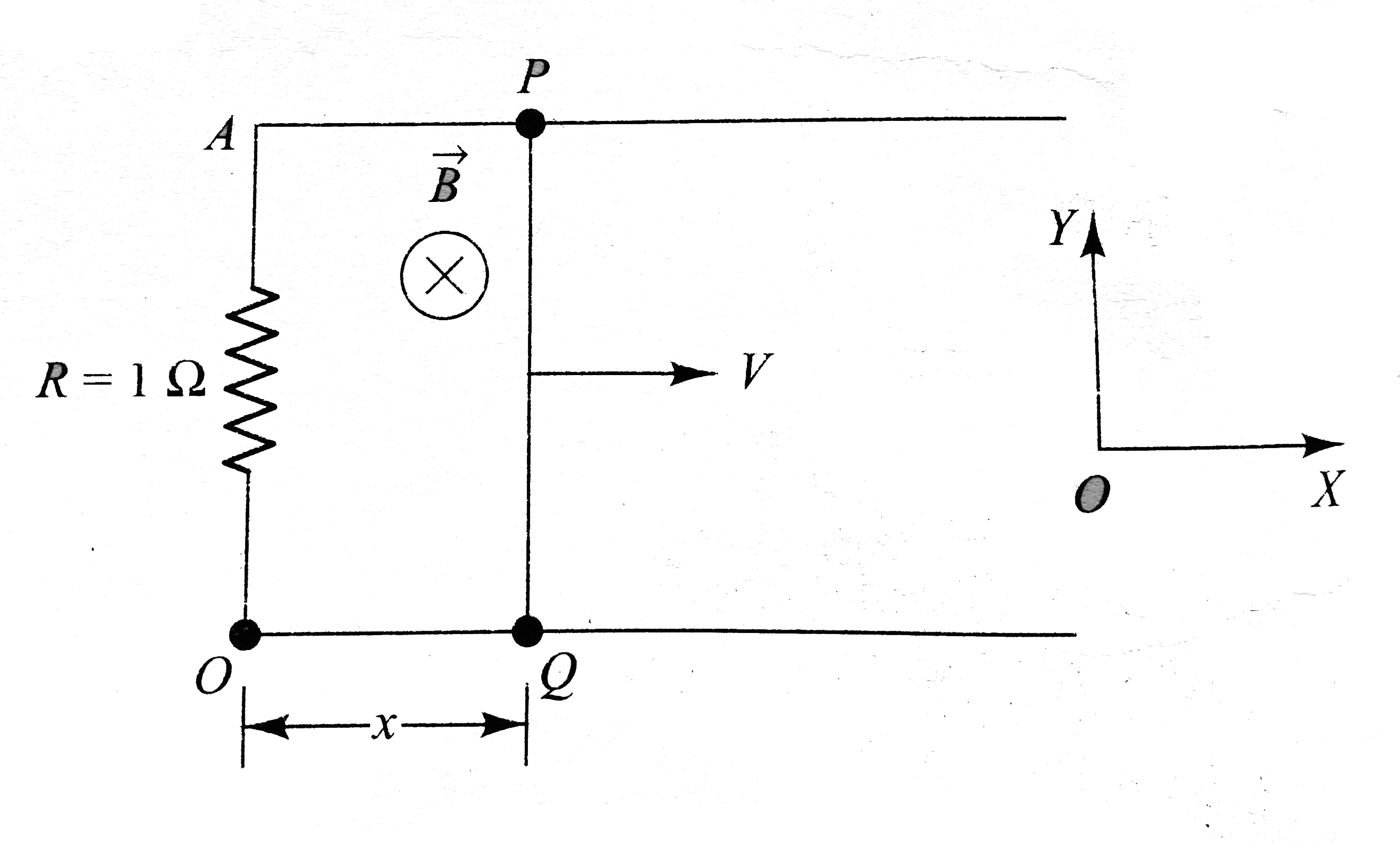
→B=cx(−ˆk)[c=constant=1SIunit]
The mass of the conductor PQ is 1kg and length of PQ is 1m. Answer the following question based on the passage.
The loss during the time interval t=0 to time t seconds when the speed of the conductor is 5ms−1 is
View SolutionConisder the dipole →p kept in a space of electric field a shown. The dipole will move

View SolutionIn the circuit shown in Fig. A conducting wire HE is moved with a constant speed v towards left. The complete circuit is placed in a uniform magnetic field →B perpendicular to the plane of circuit inwards. The current in HKDE is
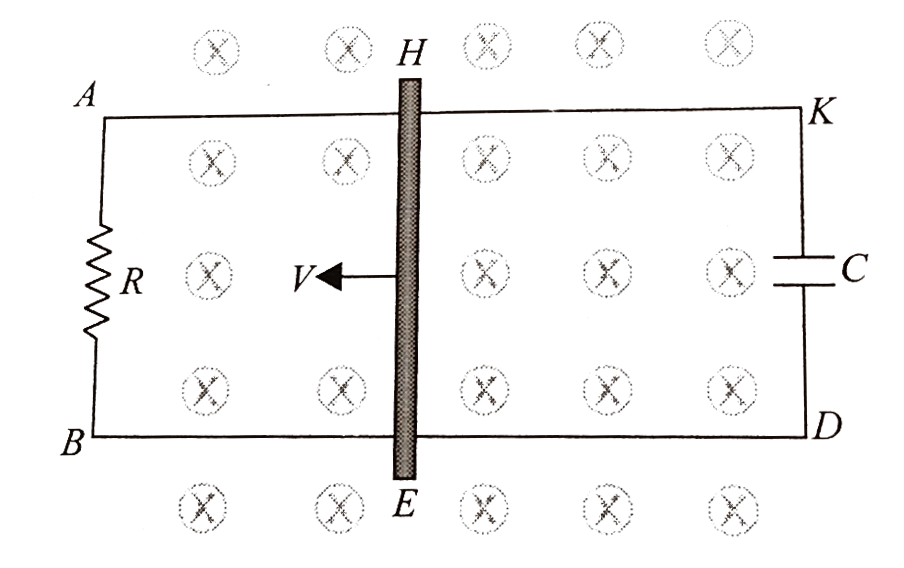
View SolutionIn the circuit shown in Fig. A conducting wire HE is moved with a constant speed v towards left. The complete circuit is placed in a uniform magnetic field →B perpendicular to the plane of circuit inwards. The current in HKDE is

View SolutionA small conducting rod of length l, moves with a uniform velocity v in a uniform magnetic field B as shown in fig __
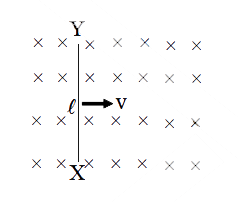
View SolutionIn the figure shown the magnetic field on the left on PQ is zero and on the right of PQ it is uniform.Find the time spent in the magnetic field.

View SolutionTwo points A and B are located in a region of space containing electric field as shown in the figure. As we move from A to B, the potentia
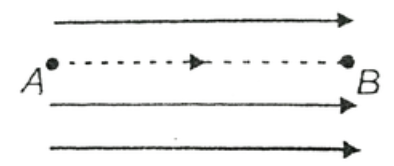
View SolutionA long conducting wire carrying a current I is bent at 120∘( see figure). The magnetic field B at a point P on the right bisector of bending angle at a distance d from the bend is
(μ0 is the permeability of free space)
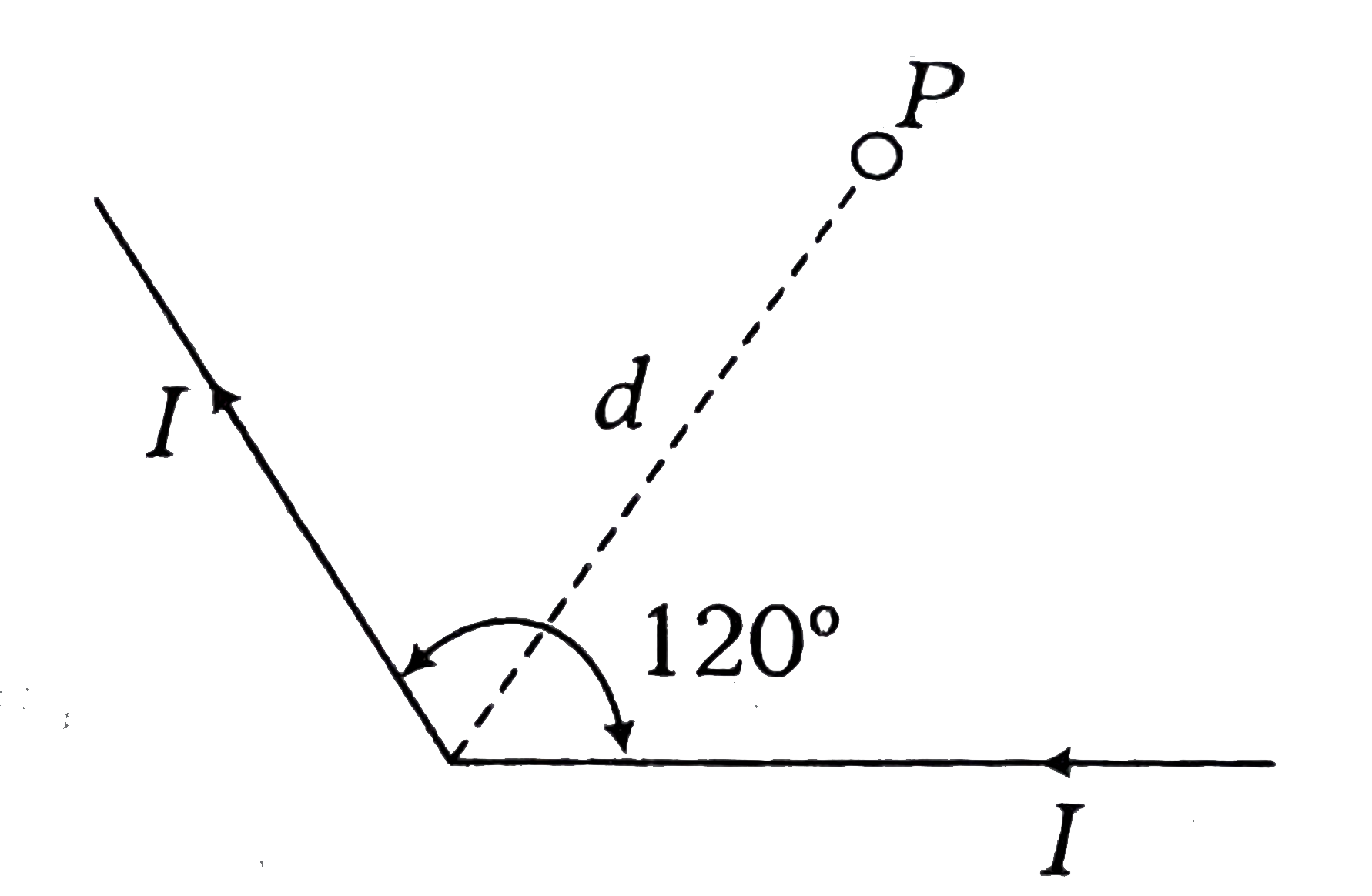
View SolutionIn Fig. there is a uniform conducting structure in which each small square has side a. The structure is kept in a uniform magnetic field B. Then the magnetic force on the structure will be
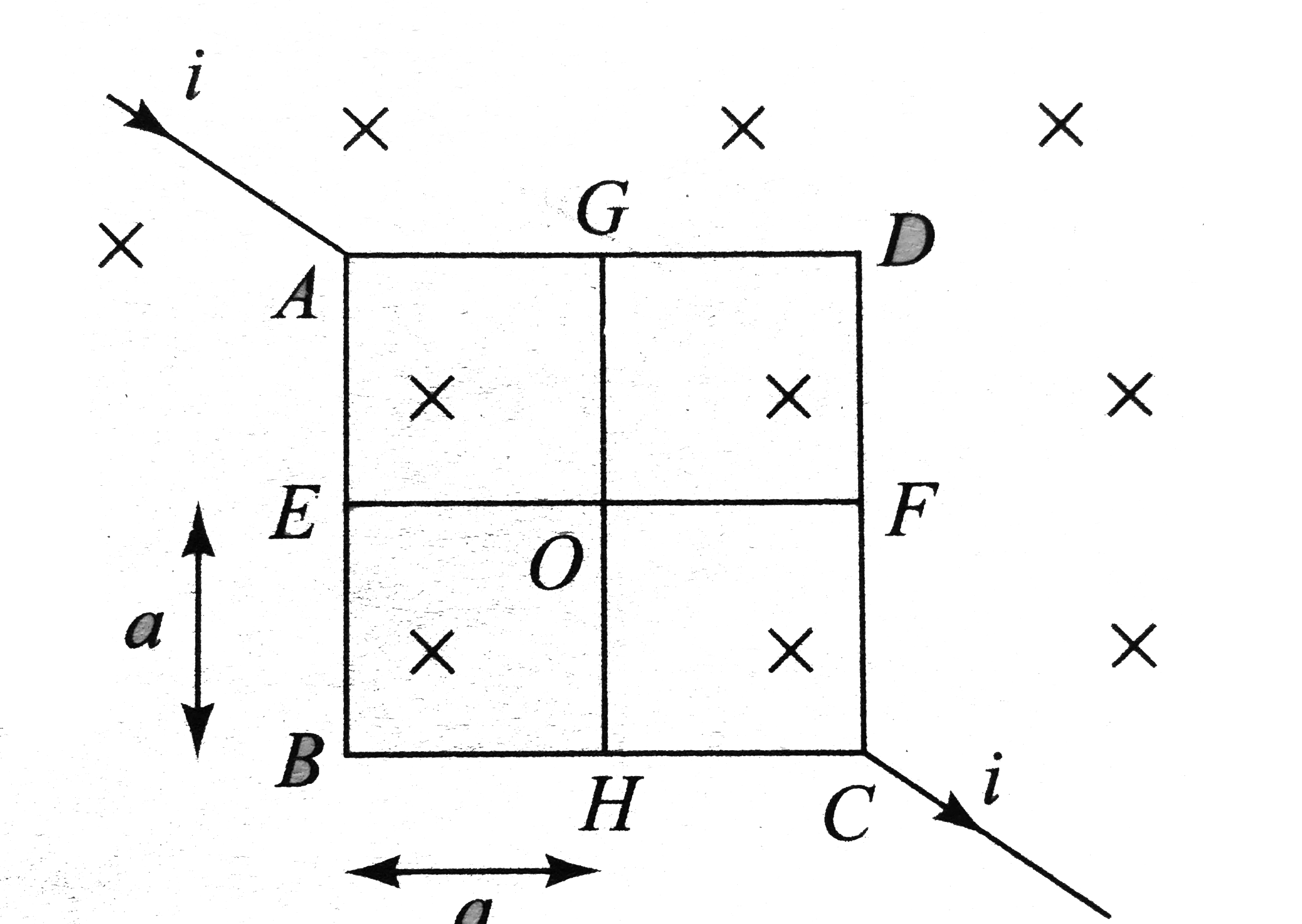
View SolutionA long conducting wire AH is moved over a conducting triangular wire CDE with a constant velocity v in a uniform magnetic field →B directed into the plane of the paper. Resistance per unit length of each wire is ρ. Then
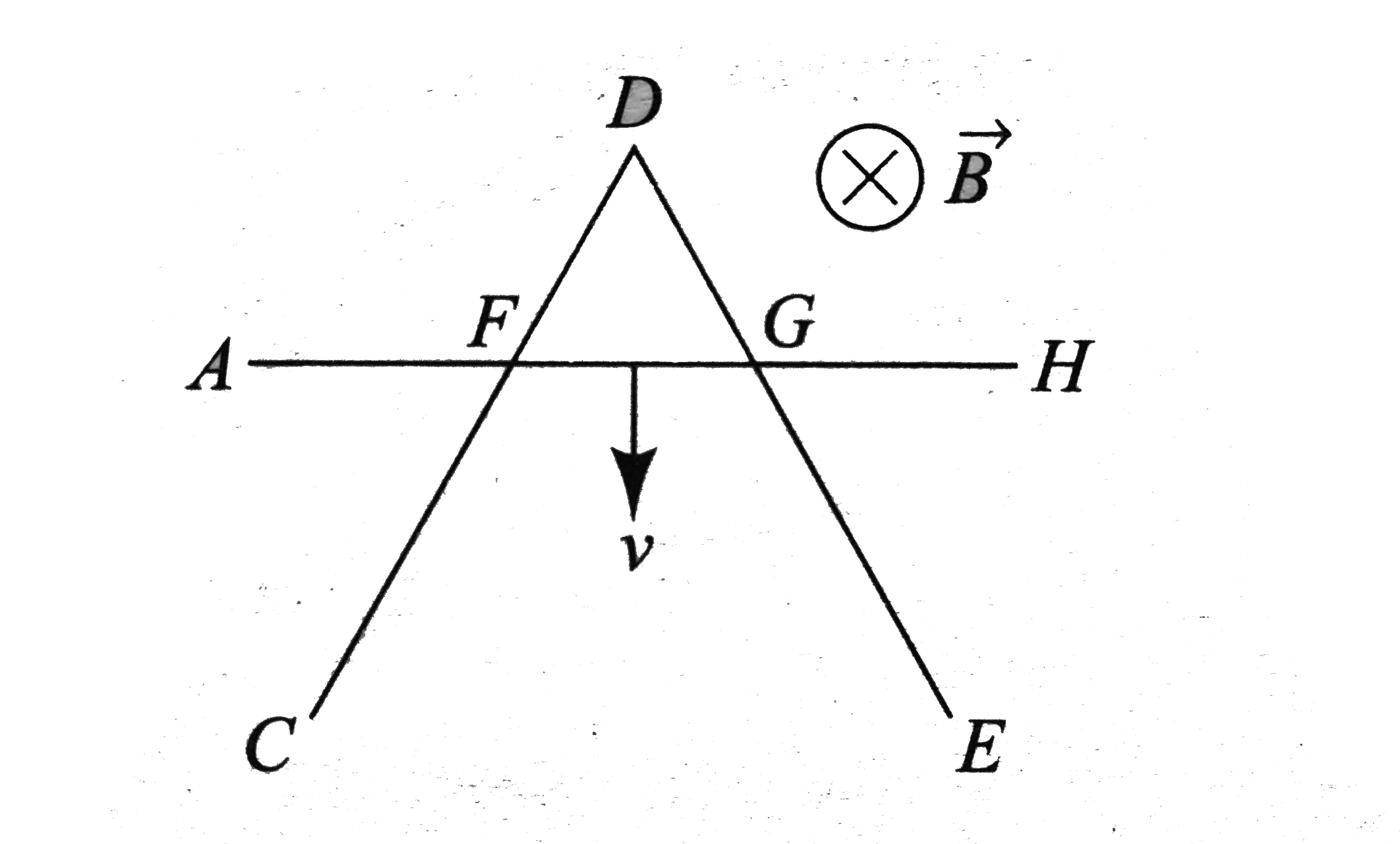
View Solution
